Conversations
Attached to the World: Piet Oudolf on the Garden of Life
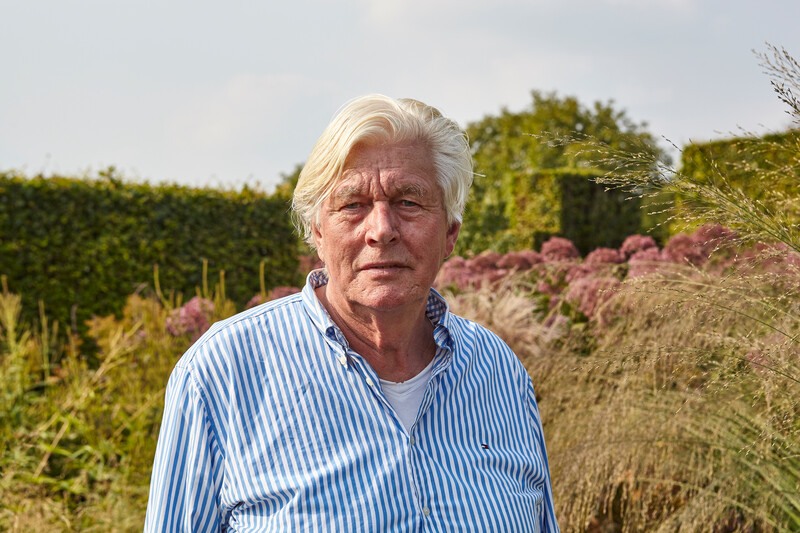
Piet Oudolf in his home garden. Photo: Mark Ashbee
- 13 August 2020
A pioneer of the New Perennial Movement in gardening and landscape design, which emphasizes naturalistic plantings that work symbiotically with their surroundings, the Dutch designer Piet Oudolf has become one of the most sought-after figures in his profession over the last two decades, creating gardens in places as disparate as Chicago’s Millennium Park, along New York City’s High Line and in the celebrated Oudolf Field on the grounds of Hauser & Wirth Somerset.
From his home in Hummelo, a tiny village in the east Netherlands where he has lived with his wife, Anja, for nearly forty years, Oudolf, who will turn 76 in the fall, spoke with Francis Till about his own garden, about the nature of time and about the compensations of the stationary life necessitated by the pandemic.
Francis Till: How important are gardens and our relationship to the natural environment at this moment in time? Do you think lockdown has told us anything about our connection to the land?
Piet Oudolf: A lot of people have been homebound and have started gardening or picking up gardening, probably because they simply have more time. Working from home, the alternative is just sitting in a room, so for those with access to outdoor space, gardening picks up. Another reason may also be that we are more aware of what we are doing than in the past, with the stress of being so busy, running around 24 hours a day. Maybe this has brought more people to gardening or at least to thinking more deeply about their lives and their futures. I think that is important and is one of the good things to emerge from the time we are living in now. Gardening, for me, is essential. It's my life. I think and breathe through it. And you always hope that other people can find that as well.
Gardening, for me, is essential. It's my life. I think and breathe through it. And you always hope that other people can find that as well.
We are just beginning plans for a new project in Denmark. It's a hospital with a roof garden of more than two-and-a-half hectares combined, where each room is positioned towards the garden. So every patient will have a room that looks onto the garden. Doctors and scientists believe that gardens play a role in treating or making recovery easier. This is something you feel when you are in the fields, in nature or in the woodlands, and it does something to you. It frees up a lot of sorrow, whether you're on your own or together with your loved ones. I think it makes you contemplate life. I’m not talking about people running 10 miles a day, because that's another function to keep you alive and to keep you happy. I think that gardens and exercise have a similar effect on people. Gardens open up this little substance in your brain that makes you feel happy and makes you also feel... more than happy, sort of high.
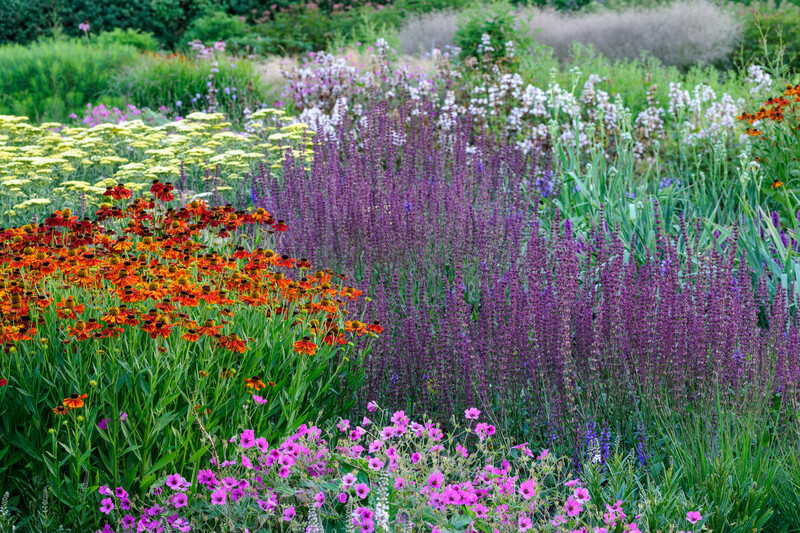
The vibrant hues of July and August in Oudolf Field. Photo: Jason Ingram

Oudolf Field, Hauser & Wirth Somerset. Photo: Jason Ingram
FT: Oudolf Field in Somerset is full of so much color over these summer months. How important is color in your garden design work?
PO: Gardens are not only for people. When you walk around you will see there are so many insects and other forms of wildlife. It's not only butterflies, but you can see bees, bumblebees, little spiders, everything... There's so many more creatures that can enjoy what we are doing there, and you can see that. And then when the flowers have gone, then you get plants that have seeds, which is another source for birds to come to the garden. So I think the garden benefits a lot more than just people.
FT: Faced with the challenges of a global pandemic, it can be easy to inhabit a more anthropocentric outlook.
PO: Yes, and I think that's probably why outdoor space is so important for people, because you can imagine so many people live in cities with no garden and they need an escape. And not only the beaches or a big walk in the woods are an escape. I think a garden also brings new energy and ideas of possibilities of plants or combinations of plants that you have never seen before, in a landscape like the Oudolf Field. It's more a landscape than a garden. You're completely surprised by what you see, because you don't normally see that in a public park.
FT: While the northern hemisphere is currently experiencing a global pandemic, we're in the middle of summer and there's a certain pleasure and respite in nature and plants at this time. But of course, there's every likelihood that this challenging time is going to last through into autumn, winter, and even into the spring. In this moment is there anything we can learn from plants and how they respond to change?
PO: I'd say plants are just what they are, and they show what they do through the seasons. What is important is that we learn to look at and understand our environment, and do better for what we see around us. We can become so focused on what we have to do that we forget what we can do and what we probably really want to do. I think that gardens are a good metaphor for change, in the sense that you can experience something different every month. I'm not talking about woodlands but about the meadows. The dynamic element of gardening is really important for our minds, I think, because it moves so quickly over the seasons and also moves us in our mood. Being aware that something is happening that you can't miss.
It’s not just about beautiful flowers—it is about life. I don't think there's a better environment than gardens to talk about life.

Piet Oudolf’s garden in Hummelo. Photo: Piet Oudolf
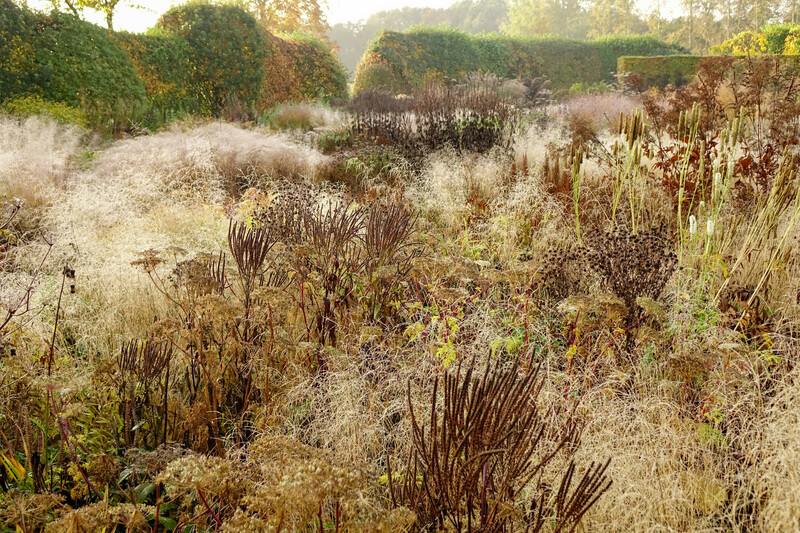
Oudolf’s home garden in the fall. Photo: Piet Oudolf
FT: In April, we hosted the digital premiere of Thomas Piper’s documentary film ‘Five Seasons: The Gardens of Piet Oudolf.’ This free screening was watched over a million times by viewers around the world. What do you think it was about this film that resonated with audiences during lockdown?
PO: Experiencing gardens, like you said, can be therapeutic. Entering a garden, you forget about your worries. It can delight you. You lose yourself in another world. I think that is what the film does. Our discussions about what gardens can do for people, or what a garden says to you or to me… I hope that the film also speaks to people. It’s not just about beautiful flowers—it is about life. I don't think there's a better environment than gardens to talk about life. If you're not in politics!
FT: The ability to maybe transcend politics or the daily news cycle—all of these things we can become so fixated on in the contemporary, digital world?
PO: Mindfulness is something that has grown in popularity over the last few years and that has to do with reflecting on your life and your position in life. And I think garden environments help people reach that state of mind too. Whether you do it with yoga or meditation, alone or with a few friends, people want to become more aware of what they're doing in these times.
FT: You have been spending the last few months at your home in Hummelo. What have you been doing during a time when you’re not able to travel as frequently as your work usually requires?
PO: I have been here since March, when I came back from Menorca, where we are working on the landscape and gardens for Hauser & Wirth’s new gallery. It was to be a busy few months, with multiple trips to the United States where I have ongoing projects, and traveling for the installation of my Vitra garden, all on hold. I was quite relieved, in a way, because I have a good network of people in the United States and in Europe who can oversee planting and implementation of the gardens. This time has mostly been spent scanning my archive of drawings that date back to 1978. I have a professional scanner and this took me about a month, in between all the other little things. Since then, life has become slower. What I normally did in a day now could take up to two or three days, you know? I have enjoyed my garden here more than ever. Although we are closed to the public, and it's totally private, it's still three acres of garden. I see more in the garden, and I look forward to the garden. I'm still working on projects, and I know that I'll start traveling again. Maybe by the end of the month in Europe by car, then see how it goes. There's not that much that I worry about in my own life. You know, it's more about what happens after.

Oudolf inside his studio in Hummelo. Photo: Mark Ashbee
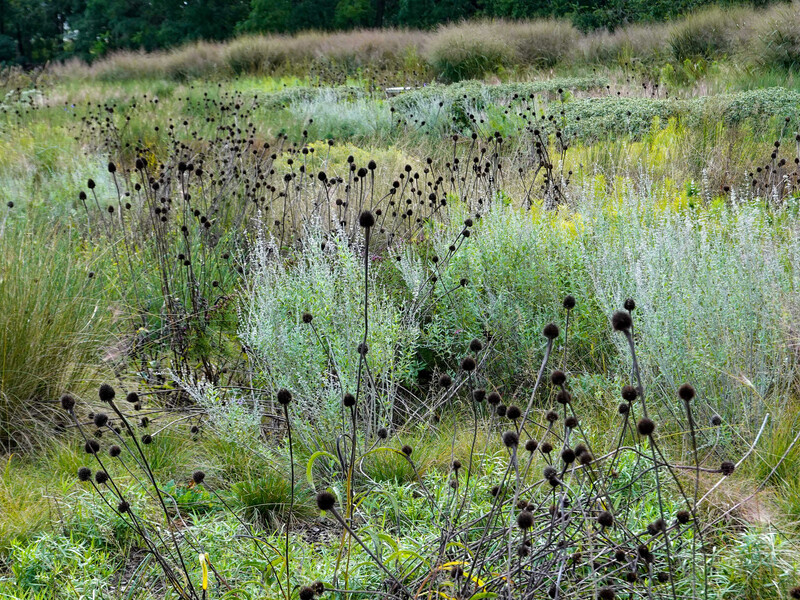
Piet Oudolf's meadow in the Delaware Botanic Garden. Photo: Piet Oudolf
FT: Can you tell us about some of your recently completed projects and things you're currently working on?
PO: Last fall, we finished Maggie's Centre for The Royal Marsden's Hospital in Sutton and also opened a new garden within Delaware Botanical Garden in South Delaware. During lockdown, we have completed a garden for Vitra in Weil am Rhein. I couldn't travel, but the garden was made beautifully and the planting was supervised by a good friend of mine who lives locally. There have been smaller garden projects in both Philadelphia and Milwaukee that we finished from a distance. We're also busy working on a substantial project in Detroit, on Belle Isle, which is an island and city park. You can watch the progress of this online. We start planting next month, so the garden will be finished, I think, next spring. Again, I’m lucky to have so many good friends who know so much about plants and also about my work. It is not a very big park, but it's a beautiful location.
Creativity is something I use with plants instead of just with paint.
FT: There is an ongoing relationship between your work and art. Certainly sculpture and gardens often live together, but your gardens are simultaneously beautiful and challenging in and of themselves, like some of the very best works of art.
PO: My gardens are different because they have a very strong signature. I've never made a secret of my work. I've always shared my drawings. I've always taught people how to do it, what to do. It doesn't matter, it stands on its own. Working with Hauser & Wirth made me aware that my work might be more... Of course, there's a lot of craftsmanship involved, but creativity is something I use with plants instead of just with paint.
FT: With paint, there is a level of control, but surely gardens introduce another element altogether?
PO: Yes, something more ephemeral. People know my work with plants and flowering plants, but a lot of my work includes the planting of trees or woodlands, as well as making meadows. If you have a section of land, you cannot just make gardens like the Oudolf Field in Somerset. We divide the land, taking into consideration what people want and how they will use the land. Sometimes we create acres of woodland that are easier to maintain and maybe more beautiful for the future, so that in fifty or one hundred years’ time, although the perennial garden may no longer be important, the trees can take center stage—they'll show off after the first generation of the garden has died. That is how I see my work. An oak or beech takes fifty years to become a tree that you really admire. You have to think about that as well when you create gardens.
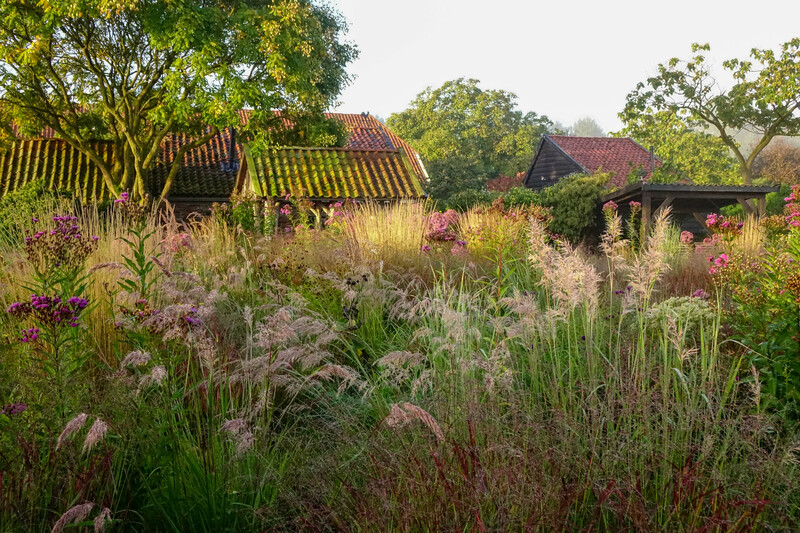
Oudolf’s home of nearly forty years in Hummelo. Photo: Piet Oudolf
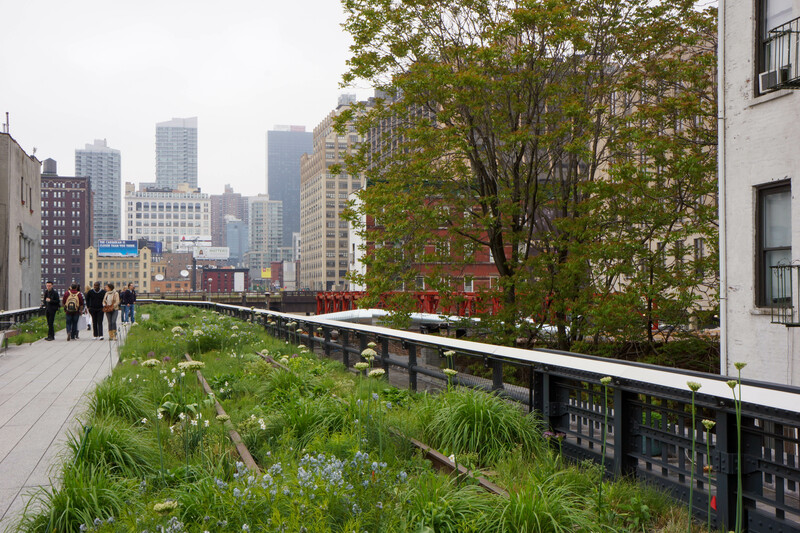
A view of Oudolf’s gardens on the High Line, New York. Photo: Piet Oudolf
FT: On the subject of taking such a long view, is there any advice you’d like to impart to next generations?
PO: In the context of our environment, I think gardening is the first thing you should do, or at least being aware of what gardens can do for your mind. And not only for your mind, but also for your environment on a small scale—learning in your own garden. It is good to experience and to see what happens when you start gardening, to see how you start to think differently. Gardening, for me, is a learning curve and a pleasure at the same time. People often ask me, ‘How can we learn to do what you're doing?’ And I reply, ‘To start, just to grow the plants you like.’ You can start with vegetables, for instance, or with some rare plants you find in a nursery. That's how it all starts. It's the connection you make with plants, whether it's a carrot or a shallot, or growing your first dahlia or perennial. It is these foundational experiences you have to go through to end up somewhere.
Learn more about Oudolf Field at Hauser & Wirth Somerset and learn about the plants in the new book, ‘Planting the Oudolf Gardens at Hauser & Wirth Somerset’, with text by Rory Dusoir, a foreword by Piet Oudolf and photographs by Jason Ingram. Published by Hauser & Wirth and Filbert Press. Cancer treatment hospital Maggie’s at The Royal Marsden in Sutton, includes architecture studio from Ab Rogers Design surrounded by Oudolf-designed gardens. In Chicago's Millennium Park, the Lurie Garden features Oudolf's planting designs realized with GGN landscape architects. In New York City, the High Line is a collaboration between James Corner Field Operations, Diller Scofidio + Renfro and Piet Oudolf, with planting design including perennials, grasses, shrubs, and trees chosen for all seasons.
